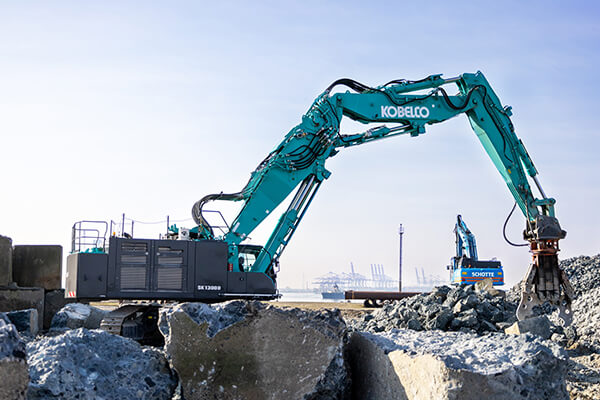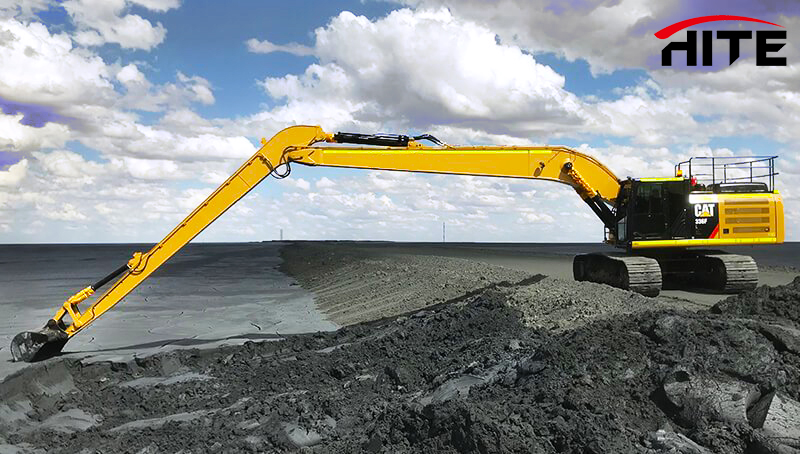The demolition of bridges is a challenging engineering task that requires precision, safety, and efficiency. In recent years, excavator demolition arms have emerged as an innovative and indispensable tool in the dismantling of bridges. These high-tech arms offer a range of advantages over traditional methods, allowing engineers to tackle bridge demolition projects with greater accuracy and reduced environmental impact. In this article, we will explore the advantages of using excavator demolition arms in bridge demolition and understand how they have revolutionized the way we approach these complex engineering tasks.
-
Excavator Demolition Arms Targeted Dismantling
Excavator demolition arms are equipped with cutting-edge technology that enables precise and targeted dismantling of bridge structures. Unlike conventional methods that often rely on brute force, demolition arms allow engineers to carefully deconstruct specific sections of the bridge while preserving neighboring elements. This level of control minimizes the risk of collateral damage to surrounding areas and other infrastructure, making the entire demolition process safer and more efficient.
-
Excavator Demolition Arms Improved Safety Measures
Safety is of paramount importance in any demolition project, and bridge demolition is no exception. Excavator demolition arms are designed with advanced safety features, including remote-controlled operation. Operators can control the demolition arm from a safe distance, reducing exposure to potential hazards and ensuring a higher degree of safety during the dismantling process. This remote control capability also allows for immediate responses to any unforeseen challenges, enhancing overall job site safety.
-
Enhanced Efficiency
Demolishing bridges using conventional methods can be time-consuming and labor-intensive. In contrast, excavator demolition arms significantly enhance the efficiency of bridge demolition projects. These arms are equipped with powerful hydraulic systems that can handle a wide range of materials, from concrete and steel to other bridge components. This capability streamlines the demolition process, reduces labor requirements, and ultimately shortens project timelines.
-
Eco-Friendly Demolition
Bridge demolition can have a significant impact on the environment, especially when traditional methods are employed. Excavator demolition arms offer a more eco-friendly approach. By precisely targeting specific sections for dismantling, the arms reduce the amount of waste generated during the demolition process. Furthermore, the ability to segregate and recycle materials on-site minimizes the need for transportation and disposal of debris, lowering the overall carbon footprint of the project.
-
Flexibility in Bridge Types
Excavator demolition arms are highly adaptable and can be utilized to demolish a wide variety of bridge types. Whether it’s a concrete bridge, a steel truss bridge, or a suspension bridge, these arms can be equipped with various attachments and configured to meet the specific challenges presented by each structure. Their versatility allows engineers to tackle diverse demolition projects without the need for specialized equipment for each bridge type, thereby saving time and resources.
-
Access to Challenging Areas
Bridges often span over water bodies or other difficult-to-reach locations, making access a major concern in demolition projects. Excavator demolition arms offer a solution to this challenge, as they can be mounted on amphibious platforms or barges, enabling access to remote areas or bridge segments over water. This accessibility ensures that no part of the bridge is left unaddressed during the demolition process.
-
Controlled Debris Management
In conventional bridge demolition, controlling the debris generated during the process can be a significant challenge. Excavator demolition arms, however, provide a more controlled approach to debris management. The ability to carefully dismantle the structure allows for the segregation of materials on-site. This enables efficient sorting of recyclable materials, reduces waste disposal costs, and promotes sustainable demolition practices.
-
Reduced Disruption to Surrounding Infrastructure
Bridge demolition can take place in the midst of busy transportation networks, which necessitates minimizing disruptions to surrounding infrastructure. Excavator demolition booms’ precision and targeted approach result in less noise, dust, and vibration compared to traditional methods. This reduction in disturbance ensures that traffic flow and nearby businesses can continue operating with minimal interruption during the demolition process.
Conclusion
Excavator demolition booms have undoubtedly revolutionized the process of bridge demolition in the engineering industry. Their precision, safety, efficiency, and eco-friendly features offer a host of advantages that make them an essential tool in modern construction projects. As technology continues to advance, we can expect even more sophisticated excavator demolition arms that further optimize the demolition process, making bridge dismantling safer, more efficient, and environmentally sustainable. By harnessing the advantages of these powerful arms, engineers can continue to push the boundaries of innovation in bridge demolition while safeguarding the environment and surrounding infrastructure.
Conclusion
As bridge engineering and demolition practices continue to evolve, the advantages of using excavator demolition arms are becoming increasingly apparent. These high-tech tools have transformed the way we approach bridge demolition, making it safer, more efficient, and environmentally conscious.
The combination of precise targeting, advanced safety measures, enhanced efficiency, and eco-friendly demolition practices positions excavator demolition arms as a vital asset in the engineering industry. Their flexibility allows engineers to tackle various bridge types and challenging locations without the need for specialized equipment, optimizing project timelines and reducing costs.
Furthermore, the controlled debris management offered by these arms ensures responsible waste disposal and promotes sustainable demolition practices, aligning with the global push for greener infrastructure development.
Excavator demolition arms have not only improved the safety and efficiency of bridge demolition but have also significantly reduced the disruption to surrounding areas. The ability to operate with reduced noise, dust, and vibration levels ensures that nearby communities, businesses, and transportation networks experience minimal disturbance during the demolition process.
Technical Improvement
As technology and engineering practices continue to advance, we can expect even more innovative features and functionalities to be integrated into excavator demolition arms. Future developments may include enhanced automation and intelligent control systems, further increasing precision and efficiency while reducing the need for human intervention.
However, with all the advantages excavator demolition arms offer, it is vital to emphasize the importance of proper training and adherence to safety protocols for operators and engineers. The potential power and capabilities of these arms demand responsible and knowledgeable operation to ensure accidents and mishaps are minimized.
In conclusion, excavator demolition arms have become a game-changer in the engineering industry, especially when it comes to bridge demolition. Their precise, safe, and eco-friendly approach to dismantling bridges has redefined the standards for demolition projects. As we continue to embrace technological advancements, we can look forward to even more efficient and sustainable demolition practices, further solidifying excavator demolition boom role as an invaluable tool in shaping the infrastructure of the future.








Leave A Comment